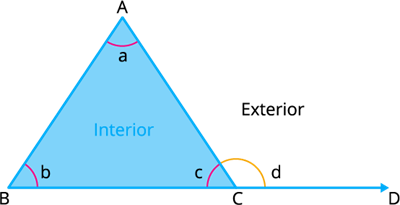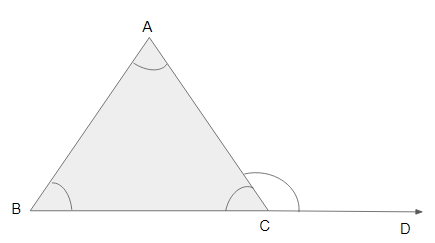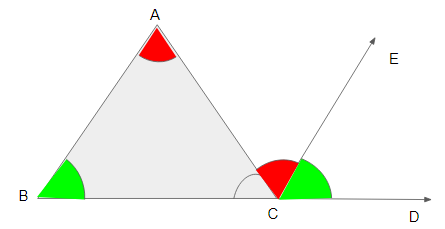PDF chapter test TRY NOW
An exterior angle of a triangle is equal to the sum of its opposite interior angles.

For vertex C, the interior angle is ∠ACB = c and the exterior angle is ∠ACD = d.
By the property, we can write that:
∠ACD = ∠CAB + ∠CBA.
That is, d = a+b.
Let's prove this statement through logical argument.
An exterior angle of a triangle is equal to the sum of its interior opposite angles.
Given:
Consider a triangle ABC with extended line CD forms an exterior angle to vertex C.
To prove:
∠ACD = ∠A + ∠B.

We will prove this using alternate angles property.
Let's draw a line CE from C which is parallel to AB.
Take the line AC as transversal.

By alternate interior angle property, ∠A = ∠ACD [alternate interior angles are equal in measure].
Now take the line BD as transversal for the parallel lines AB and CD.
By corresponding angles property,∠B = ∠ECD [corresponding angles are equal in measure].
∠ACD = ∠ACE + ∠ECD = ∠A + ∠B
Thus, it is obvious that the exterior angle of a triangle is equal to the sum of its opposite interior angles.
